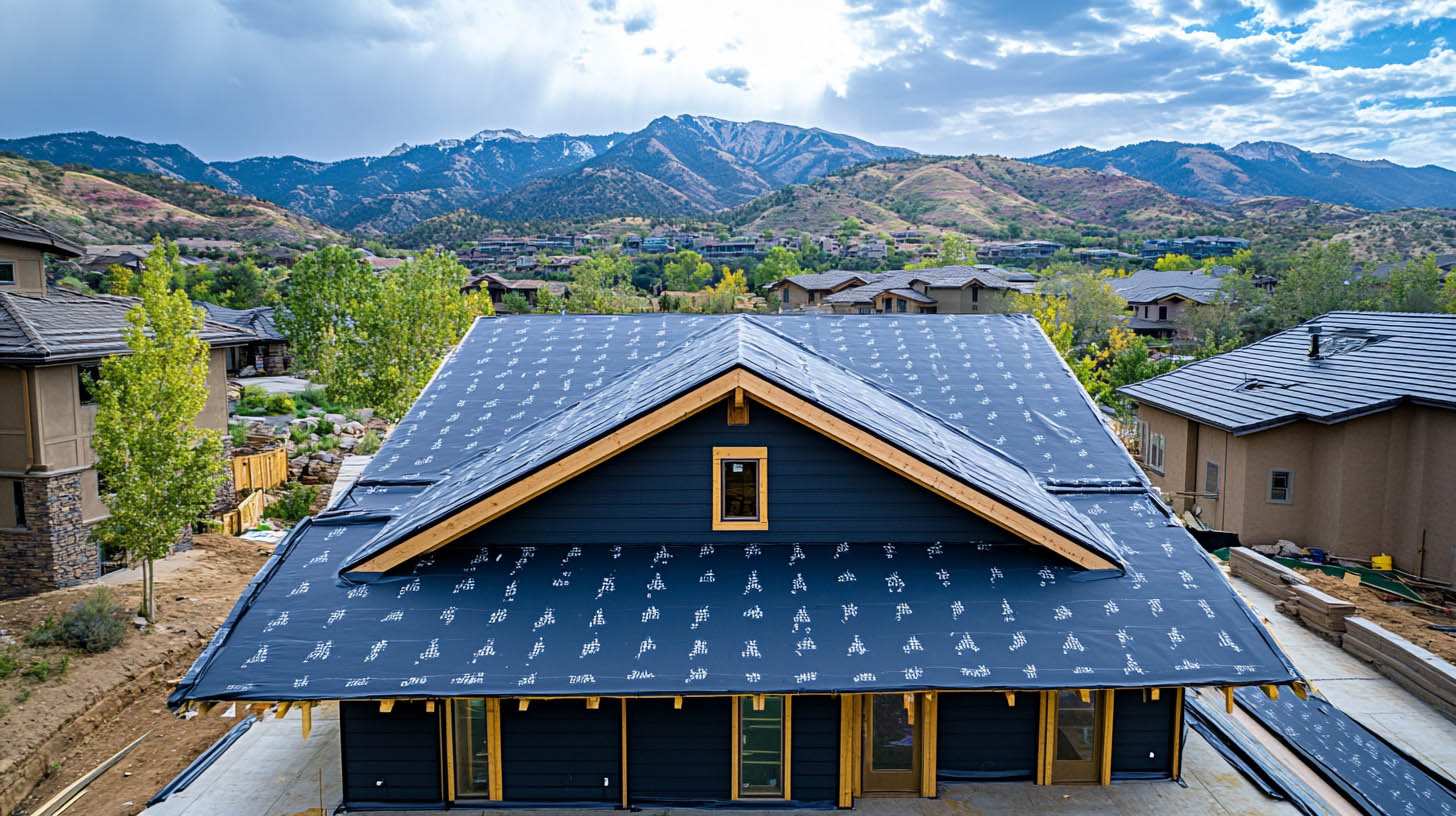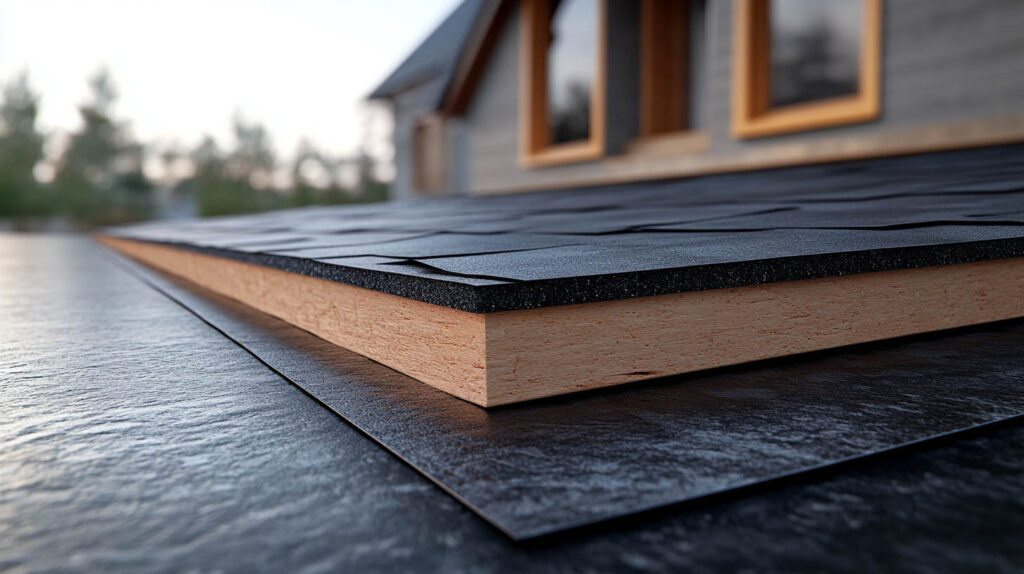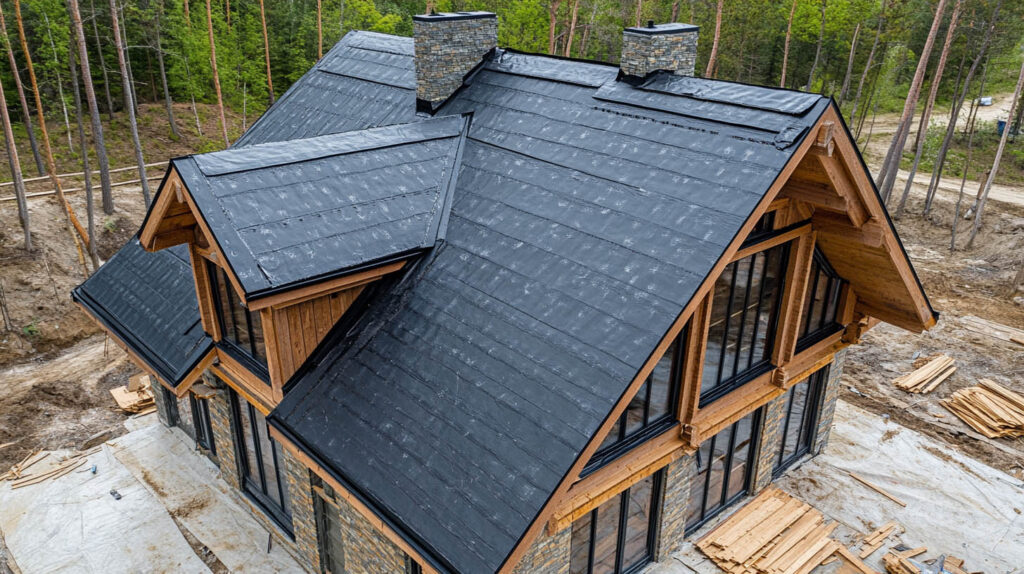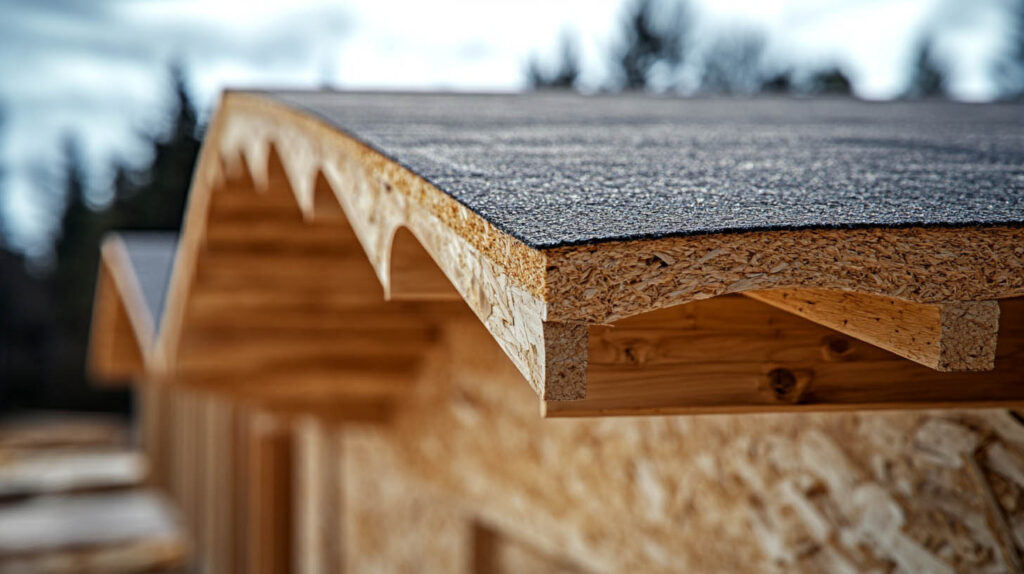
As a homeowner, you understand the importance of a sturdy, reliable roof. When selecting roofing products and materials, it’s easy to focus on the visible aspects, like the shingles. However, a critical component lies beneath those shingles: roof underlayment, which is installed directly on top of the GAF shingles. This often-overlooked layer provides essential protection against the elements and contributes significantly to the longevity of your roof. Rainstoppers Roofing, a leading roofing company, emphasizes the significance of proper underlayment for roof shingles in ensuring the durability and longevity of your roof.
Understanding Roof Underlayment
Imagine this: a sudden downpour, wind driving rain sideways, or even a slow, steady drizzle. Now, picture that water seeping through your roof shingles and into your home, particularly at the edge of the roof, where a drip edge and fascia would be beneficial. This scenario highlights the importance of roof underlayment. Acting as a water-resistant barrier installed on the roof deck, underlayment prevents leaks and moisture damage.
It’s essential to understand that underlayment isn’t meant to be a primary barrier against water. Its primary function is to provide a backup layer of protection should your shingles fail to keep out water completely. This additional layer of security is crucial for safeguarding your home and its contents.

What is Roof Underlayment?
Roof underlayment is a water-resistant or waterproof material, usually measured in square feet, installed directly onto the roof deck, underneath your shingles. It acts as a secondary barrier against moisture, preventing leaks and water damage. This layer is crucial for protecting your home in situations where water penetrates the shingles, such as during heavy rain, snow, or ice dams, and is often used in conjunction with plywood for additional structural support.
Think of underlayment as a safety net for your roof. While shingles are the first line of defense against the elements, they aren’t foolproof. Underlayment provides that extra layer of protection, ensuring that minor leaks or wind-driven rain don’t lead to significant damage.
There are different types of underlayment available, each with its advantages and disadvantages. Understanding the various options and their suitability for your specific climate and roof type is essential for making an informed decision.
Roles and Benefits of Underlayment in Roofing
The role of underlayment in protecting your home from water damage cannot be overstated. This essential layer acts as a shield against leaks caused by heavy rain, ice dams, and even wind-driven rain that might find its way under the shingles. By providing this additional line of defense, underlayment safeguards your roof deck, insulation, and ensures proper ventilation for the interior of your home.
Beyond water protection, underlayment also enhances the overall performance of your roof. It can improve the energy efficiency of your home by acting as an additional layer of insulation, keeping your house cooler in the summer and warmer in the winter. Moreover, it can reduce noise transmission from rain, hail, and wind, creating a more peaceful living environment.
In regions prone to high winds, a robust underlayment is crucial for preventing shingle lift and blow-off. This added protection keeps your roof intact, ensuring its longevity while minimizing the risk of costly repairs due to wind damage.

Types of Underlayment for Roof Shingles
Selecting the right underlayment depends on various factors, including your budget, climate, and building codes. Two primary types dominate the market: synthetic underlayment and felt underlayment. Each offers distinct advantages, prompting careful consideration to determine the optimal choice for your roofing needs.
Understanding the differences between these materials, such as their durability, water resistance, and cost, allows you to make an informed decision, ensuring your roof remains resilient and long-lasting.
Synthetic vs. Felt Underlayment
When choosing between synthetic and felt underlayment, it’s crucial to consider the pros and cons of each. Synthetic underlayment, typically made from polypropylene or polyethylene, offers superior durability, tear resistance, and a longer lifespan compared to felt. It’s also lighter and easier to install. However, this added performance often comes at a higher price point.
Felt underlayment, traditionally the go-to choice, is still a viable option for many homeowners due to its affordability. Made from asphalt-saturated paper, felt underlayment is generally less durable and susceptible to tearing, particularly during installation. It’s also heavier and less resistant to mold and mildew compared to synthetic alternatives.
Choosing the Right Underlayment for Different Climates
Choosing the right underlayment for your roof is vital, and climate plays a significant role in this decision. The ideal underlayment varies depending on the part of the country and its associated weather patterns. In regions with heavy rainfall, a highly water-resistant underlayment, such as a synthetic option, is recommended. This type of underlayment effectively prevents leaks even under prolonged exposure to moisture.
Furthermore, areas prone to ice dams require specialized underlayment with enhanced water-shedding capabilities. This type of underlayment, often referred to as an “ice and water shield,” is typically installed along the eaves and valleys of your roof, providing an impenetrable barrier against water back-up caused by ice dams.
Consulting with a local roofing contractor is invaluable, as they possess expert knowledge of regional climate conditions and building codes. Their guidance can help you select the most appropriate underlayment for your specific needs, ensuring optimal roof performance and protection.

Conclusion
In conclusion, underlayment plays a crucial role in protecting your roof and ensuring its longevity. Understanding the various types of underlayment and choosing the right one for your climate is essential for a successful roofing project. Whether you opt for synthetic or felt underlayment, each type offers unique benefits that contribute to the overall integrity of your roof shingles. Always prioritize the importance of underlayment to safeguard against moisture, temperature changes, and other external factors that could impact the structure of your roof. If you have any further questions about underlayment for roof shingles, refer to our FAQ section for detailed insights.
Frequently Asked Questions
Why is underlayment important for roof shingles?
Underlayment acts as a protective water shield beneath your roofing shingles. It safeguards your home from leaks caused by rain, ice dams, or damage to the shingles themselves. Even if water penetrates the shingles, the underlayment prevents it from reaching your roof deck and causing damage.
Can roof shingles be installed without underlayment?
While technically possible, installing roof shingles without underlayment is strongly discouraged and often violates building codes. Most reputable roofing contractors will not install shingles without underlayment, as it compromises the roof’s integrity and can void the manufacturer’s warranty.
How does climate affect the choice of underlayment?
Different climates pose different challenges to roofing materials. For instance, regions with high winds necessitate a more robust underlayment to prevent shingle lift. Areas with heavy snow and ice require underlayment designed to resist ice dams, ensuring adequate protection based on your part of the country.
